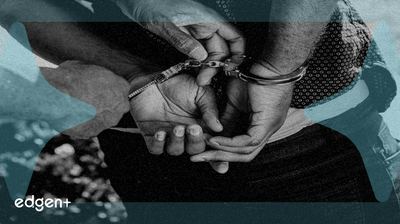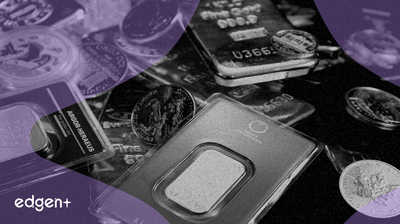Related News

GoPlus Reports Over $130,000 Stolen in Solana-Based DMT Token Airdrop Fraud
## Executive Summary A fraudulent airdrop for a "DMT" token on the **Solana** network has resulted in the theft of over $130,000 from more than 1,000 users, as identified by Web3 security firm **GoPlus**. The incident highlights the persistent risks of authorization fraud in the decentralized finance (DeFi) space and casts a negative light on the security of airdrop campaigns, a common user acquisition tool for new projects. This event could negatively impact user confidence and participation in future **Solana**-based projects. ## The Event in Detail **GoPlus** detected a security vulnerability linked to a token airdrop for an entity named "DMT" on the **Solana** chain. According to the firm's analysis, attackers exploited authorization permissions granted by users claiming the airdrop. This allowed the attackers to gain control of user assets and execute cross-chain transfers. The confirmed financial damage exceeds $130,000, with the number of affected user wallets surpassing one thousand. The fraudulent event leverages a popular mechanism in the crypto space—airdrops—turning a marketing tactic into a vector for financial theft. ## Market Implications The primary implication of this fraud is the erosion of user trust within the **Solana** ecosystem. Airdrops are a foundational element for bootstrapping network effects and distributing tokens to a wide user base. When this channel is proven to be insecure, it can create significant hesitation among potential users, thereby harming the growth prospects of legitimate projects. This incident may compel users to become more risk-averse, potentially slowing the adoption of new decentralized applications (dApps) on the **Solana** network. ## Expert Commentary The detection of this fraudulent activity by **GoPlus** is notable, as the security firm recently expanded its "Token Security API" and "Malicious Address API" services to support the **Solana** network. **GoPlus** has previously identified security risks in other blockchain ecosystems, including vulnerabilities related to over-authorization and unlimited token issuance. The firm's analysis of phishing incidents on **Solana** notes that scammers are actively exploiting areas where security infrastructure is still developing. This context positions **GoPlus** as a key security authority in the space, and its findings underscore a critical need for enhanced, proactive security measures for dApps and users alike. ## Broader Context This $130,000 theft on **Solana** is a microcosm of a larger, systemic issue within the cryptocurrency industry. The total amount of cryptocurrency stolen in the first half of 2025 alone was reported to be over $2 billion, with security surrounding digital asset infrastructure identified as a primary weak point. Reports have shown that Americans have lost tens of billions of dollars to crypto-related fraud, and the issue has drawn the attention of U.S. authorities, including the formation of a "Scam Center Strike Force." The **DMT** token fraud serves as another data point illustrating that despite the market's maturation, security risks remain a significant and costly barrier to mainstream adoption.

Post-Shutdown Data Release Intensifies Scrutiny on Federal Reserve's Policy Path Amid Market Uncertainty
## Executive Summary The conclusion of the longest-ever U.S. government shutdown, which lasted 43 days, has set the stage for a period of heightened market volatility as key economic data is released. This forthcoming data from agencies like the Bureau of Labor Statistics (BLS) and Bureau of Economic Analysis (BEA) will be intensely scrutinized by investors. The reports are critical inputs for the Federal Reserve, which faces a contentious policy decision in December amidst internal divisions on the future path of interest rates. With U.S. stock indices near all-time highs, yet concentrated in a handful of tech giants, the market is delicately poised, making the implications of the new data particularly significant. ## The Event in Detail Following the 43-day federal government shutdown, the BLS and BEA are now preparing to release a backlog of crucial economic indicators. The specific timing remains pending, with Goldman Sachs economists anticipating a revised schedule to be announced between November 13 and November 17. The delayed reports, including the Q4 GDP figures, are essential for providing a clear picture of the economy's health, particularly regarding growth, inflation, and the labor market. The sudden influx of this long-awaited data is expected to be a primary driver of market activity in the coming weeks. ## Market Implications Financial markets are bracing for potential turbulence. Any significant deviation in the upcoming data from consensus expectations could challenge the Federal Reserve's recent policy actions and undermine its credibility. The **S&P 500** and **Nasdaq** have seen an extraordinary run, pushing them to near-record valuations. However, this optimism is narrow, with a group of stocks known as the **"Magnificent Seven"** now accounting for approximately one-third of the S&P 500's total market capitalization. This concentration exposes investors to significant risk should these few companies falter, and the new economic data will be a key test of the market's underlying strength. ## Expert Commentary: A Divided Federal Reserve The Federal Reserve's Open Market Committee is exhibiting clear signs of division regarding its next policy steps. After implementing two 25-basis-point rate cuts in September and October 2025, which brought the federal funds rate to a range of **3.75-4.00%**, officials are split on the path forward. Governor Christopher Waller has publicly stated his support for another quarter-point cut in December, citing concerns over a deteriorating labor market. In sharp contrast, Kansas City Fed President Jeffrey Schmid and Dallas Fed President Lorie Logan, who both dissented on the October cut, have indicated opposition to further easing due to concerns over persistent inflation, which remains elevated at **3.0-3.1%**. ## Broader Context: Market Fatigue and Concentration Risk The current market environment is characterized by a combination of high valuations and increasing investor anxiety. While major indices are near their peaks, there are underlying signs of fatigue and concerns about slowing economic growth and "sticky" inflation. The heavy concentration in a small number of mega-cap technology stocks has created a structural vulnerability. This lack of breadth means the market's resilience is heavily dependent on the performance of a few key names. The impending economic data, coupled with the Fed's policy uncertainty, creates a critical juncture for Wall Street, which will determine if the bull market can be sustained or if a correction is imminent.

MKS PAMP Restarts Gold Token Project Amid Rising Institutional Demand for Digital Assets
## The Event in Detail **MKS PAMP SA**, a prominent Swiss precious metals refiner and trader, has officially announced the restart of its gold token project. This decision is a direct response to what the firm identifies as burgeoning market interest in digital gold, particularly from cryptocurrency investors and institutional funds. The company previously launched an innovative digital gold product named **DGLD**, which successfully digitized $20 million worth of gold, making it the largest gold token on the market at the time of its launch. The relaunch aims to build on this initial success and capitalize on the current favorable market conditions. ## Deconstructing the Financial Mechanics The project focuses on the tokenization of physical gold, creating a digital token that is directly backed by and redeemable for gold bullion held in **MKS PAMP's** state-of-the-art vaults in Switzerland. Each token represents a specific weight of physical gold, providing investors with a regulated and transparent method of owning the precious metal. This structure is designed to merge the security and stability of a traditional asset like gold with the efficiency, divisibility, and transferability of a digital asset on the blockchain. This initiative serves as a key bridge between traditional commodity markets and the expanding digital finance ecosystem. ## Market Implications The revival of **MKS PAMP's** gold token has significant implications for the broader market. It serves as a strong indicator of the maturation of the tokenized real-world asset (RWA) sector. By providing an institutional-grade, asset-backed digital product, **MKS PAMP** is helping to legitimize and accelerate the adoption of tokenization. This move is expected to attract further institutional capital into the digital asset space, as it offers a familiar investment (gold) in a novel, technologically advanced format. Furthermore, it sets a precedent for other traditional financial institutions to explore the tokenization of their own assets, potentially unlocking trillions of dollars in illiquid value. ## Broader Context This development occurs within a larger context of increasing institutional engagement with digital assets. A 2025 survey from **Coinbase & EY-Parthenon** revealed that an overwhelming majority of institutional investors plan to increase their allocations to digital assets, driven by the expectation of higher returns compared to other asset classes. This sentiment is echoed in strategic institutional moves, such as the Abu Dhabi Investment Council viewing **Bitcoin** as a form of "digital gold." **MKS PAMP's** strategy also includes strengthening its physical presence in key financial hubs, notably boosting its Hong Kong operations to establish the city as a global gold trading center. The digital gold initiative is a synergistic component of this global strategy, positioning the company at the intersection of traditional commodities and digital finance innovation.
